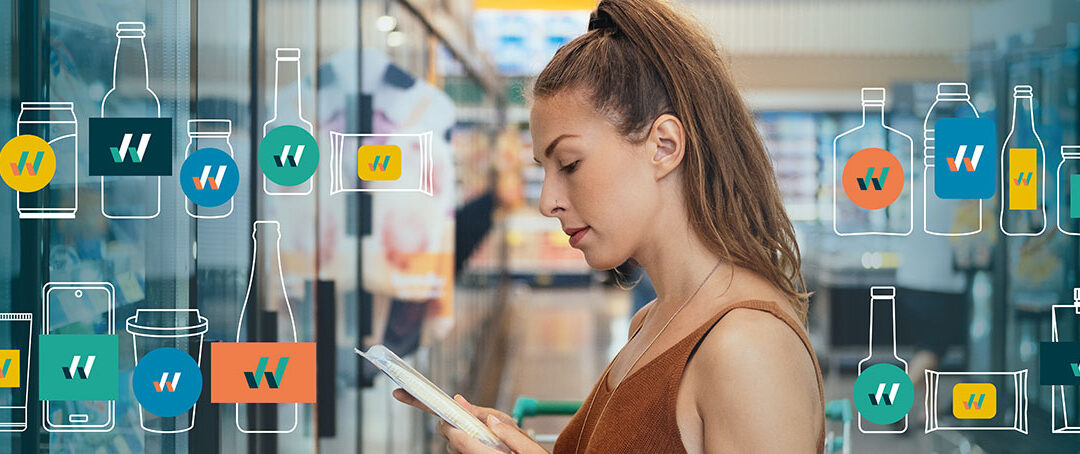The everyday choices that people make have become an issue of global importance. In 2015, the United Nations committed to reducing premature deaths from noncommunicable disease by a third before 2030 – and lifestyle factors like an unhealthy diet can increase the risk of dying from chronic conditions.
As part of their efforts to lower mortality rates, UN member states have committed to programmes that get people healthier, based on recommendations made by the World Health Organization. And one, seemingly easy to implement, idea is front-of-pack (FoP) nutrition labelling.
But while food labels are a simple way for consumers to make better choices, they’re a much more complex headache for packaged food brands. Because although the WHO recommends certain criteria, there is no cohesive global system for how nutrition information should be displayed.
Where does this leave food and beverage brands? With the unenviable task of working out how best to adapt packaging for each international market. As your brand expands, you’ll need to create FoP labelling visuals that comply with regional guidelines – and which are recognisable to local consumers.
One vision, no framework
Broadly speaking, FoP labels around the world serve the same purpose: informing consumers on the nutritional profile of the foods they’re considering purchasing and helping them to identify – and in some cases, quantify – those ingredients considered to be unhealthy, such as salt, sugars and certain fats.
However, there’s no global standard for how this information should be presented. Which creates challenges for packaged food brands operating or looking to grow internationally.
To make nutrition information meaningful to the consumer, many regions have developed their own systems and icons – but the approach can be very different from country to country. For example:
Approach 1: Nutrient-specific
In addition to WHO recommendations, some parts of the world have their own set of nutritional guidelines. For example, countries in the European Union (EU) are required to list reference intake (RI) figures under the 2014 Food Information for Consumers Regulation. RI is the percentage of each person’s total daily recommended nutrient or energy intake that each foodstuff comprises. And although the regulation is consistent across the EU, the way countries display RI data is not.
For instance, in the UK – which currently still follows EU protocol – packaged food brands use a colour coded traffic light labelling system to educate consumers. But Belgium, France, Portugal and Spain use nutri-score labelling, which grades products from A to E, based on their nutritional quality.
The UAE is currently an outlier in the Gulf – with legislation in place to make the traffic light system mandatory on front-of-pack from January 2022. It takes inspiration from the system used in the UK but with some important modifications – so you’d still need to adapt this element before launching the same product in the UAE.
It will be interesting to see how the other Gulf countries decide to move on this in the future given their stated aim to align their nutritional policies wherever possible. So far, the Kingdom of Saudi Arabia has elected to make this a voluntary addition to FoP.
Approach 2: Summary indicator
Beyond the EU, there’s even greater variety in the way regions display nutritional values. Many countries use a summary indicator to rate the healthiness of a product, for example.
Across Scandinavia, authorities in Denmark, Iceland, Norway and Sweden use the Nordic keyhole symbol – and Lithuania and Macedonia use this system as well. Meanwhile, Australia and New Zealand run a Heath Star Rating scheme, which ranks food products from half a star to five stars, based on their volume of ‘bad’ ingredients like saturated fat, salt and sugar, and ‘good’ ingredients like fibre, protein, fruits, vegetables, nuts and legumes.
Approach 3: Seal of approval
The simplest (if most reductive) front-of-pack nutritional label is one which uses a symbol to show that food meets a certain nutritional standard. But globally, there’s discrepancy between whether food packaging should warn consumers about health dangers or whether it should promote better choices.
In Chile, Peru and Uruguay, for example, packaged foods include a stop symbol if they are deemed to be an unhealthy choice. But Canada uses a magnifying glass icon to highlight products that are high in sugars, sodium and saturated fat.
On the flip side, countries like Nigeria, Argentina and the Czech Republic have adopted the Choices International Foundation approach, including a tick symbol on food and drink that is better for people’s health.
With so many variations, packaged food brands trading internationally need to be clued-up on which system is used by each territory, in order to create labels that meet market expectations.
Getting the maths right
Successful packaging isn’t just about the way a label looks, however. Beyond presentation, brands need to think about how nutrition information is calculated.
For instance, some regions will display the nutritional value for added sugars, whereas others will track total sugars. Some will separate saturated fats from total fat content, others will not. The volume on which calculations are made may also vary; some nutritional values are displayed per 100g, whereas others are based on serving size.
The benefits of properly localised packaging
The good news is that nutrition labelling is working; health experts are starting to see an improvement in people’s food choices. But more needs to be done. Mounting pressure for a consistent, recognisable system is pushing global leaders to standardise what information people are given, and how that data is displayed.
It’s likely we’ll see more voluntary FoP labelling initiatives become mandatory as we move towards an international framework, increasing the burden on packaged food companies. In fact, this is already starting to happen; in Mexico, warning symbols to indicate ‘excessive’ nutrients were made compulsory in October 2020, with brands and manufacturers given just six months to comply.
This isn’t just a conversation about compliance, however. For brands moving into new international markets, meeting local labelling guidelines is a matter of consumer trust.
If a shopper encounters something they’ve never seen before, familiar food labels are a point of reassurance. Even if it contains ingredients they’ve never come across, knowing it meets regional nutritional standards could make them more likely to try it.
With so many visual and data variances, it’s all too easy to get FoP labelling wrong. To make sure your strategy is right across the board, you need to work with experts who understand the intricacies of each market you’re targeting and help you create nutritionally compliant FoP labelling.
As a global food labelling agency, Hooley Brown recognises that successful localisation is not just a matter of authentic translation; it’s about making sure that everything – the layout, the iconography and the language – aligns with local standards in a way that the consumer can understand.
Growing internationally? Follow Hooley Brown on LinkedIn for more useful insights.
This blog post was written in April 2021. Facts were correct at the time of writing.













